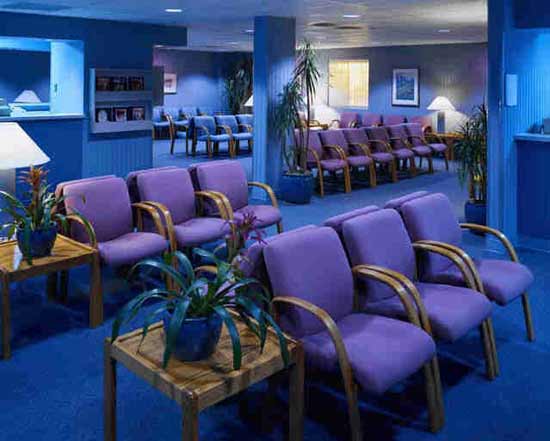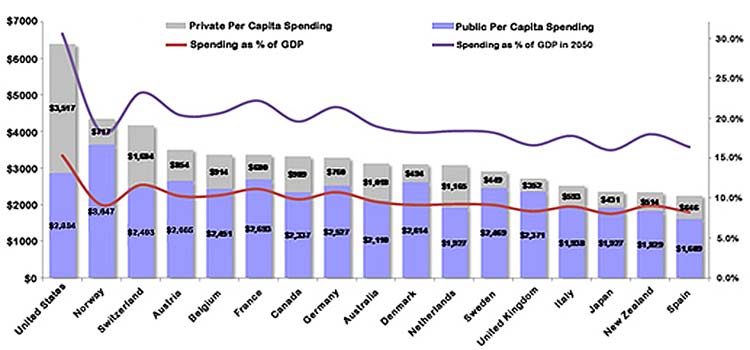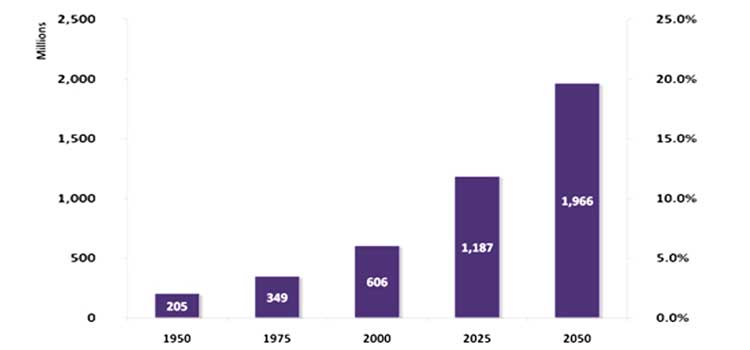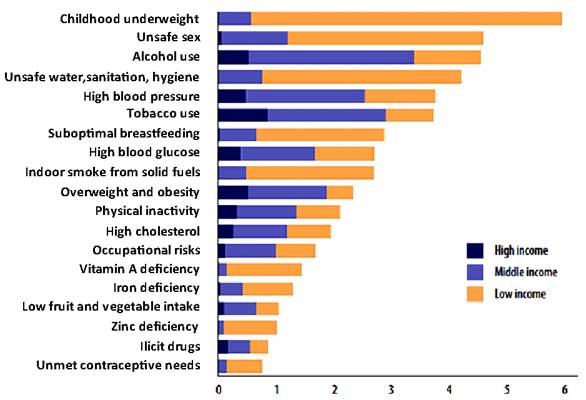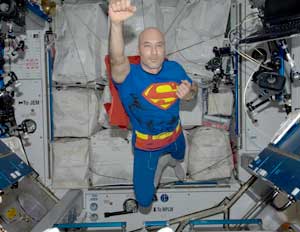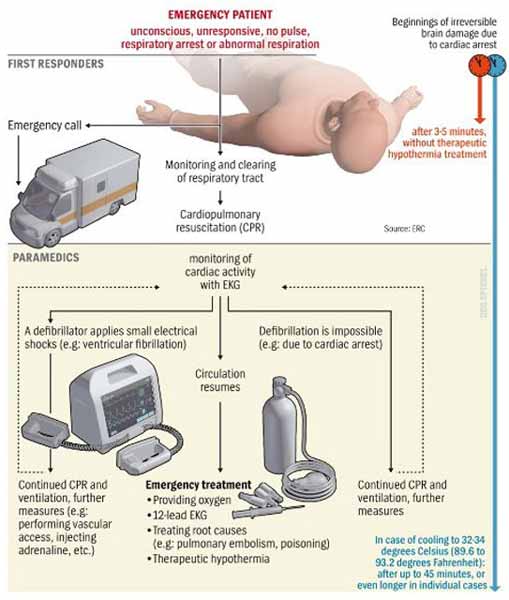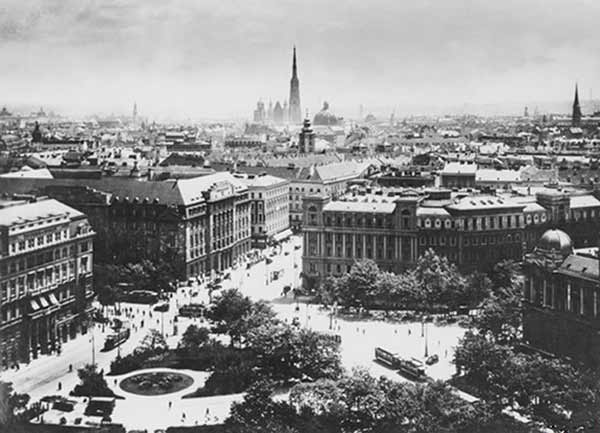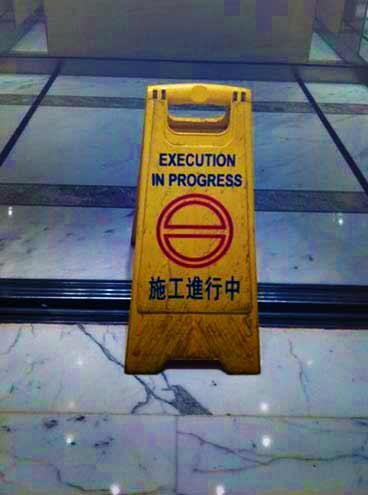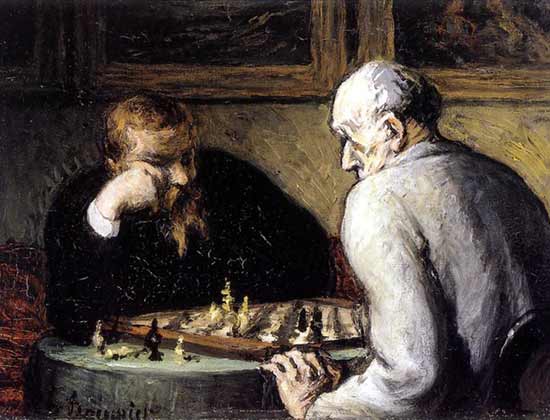In a time of drastic change, it is the learners who inherit the future.
The learned find themselves equipped to live in a world which no longer exists.
Ensuring Insurance
Nov. 15, 2013
One of the most serious impediments to rational debate on health care is the misuse of the term “health insurance.” An equivalent plan for restaurant meals would be that instead of paying for your meal, you would pay an annual premium to “Blue Eats,” which would in turn reimburse restaurants for their costs, plus a profit margin. Every individual member of “Blue Eats” would have an incentive to eat out a lot and order the most expensive items on the menu because costs are shared among all members of “Blue Eats.” This would be a great marketing ploy by restaurants, because it would get people to eat out more and spend more while they were at it. What we call “health insurance” originated as a marketing ploy by physicians and hospitals for a similar result. You can see how well it works.
If a benefit for eyeglasses costs you only $15 annually, you may delightedly get a new pair each year because—hey, why not? But where does the money for the balance of the cost come from? Not really from the insurance company, but from other employees whose wages are reduced to cover the subsidy, or from the company who compensates by lowering product quality or raising product prices or maybe by outsourcing. Other people are bearing that cost. Something similar happens when employers provide employees with low-cost insurance. When we lived in New Jersey, our family’s insurance was $30 more per month for vision coverage. This included annual vision tests and one pair of glasses per year. Three family members wore glasses, so we came out slightly ahead—but only if each person’s glasses were replaced yearly (whether needed or not). Without insurance, we would, when appropriate, have worn those same glasses for another year thereby paying slightly less than we were paying for insurance and saving ourselves money—but only if the doctor charged us the same “special” rate that the insurance company was getting. However, the doctor didn’t. Without insurance, we were charged considerably more for the exact same product or service (our profit margin was lower overall).
For insurance to work, expenses should be unpredictable—so you buy protective insurance most of the time. With predictable expenses, you always draw from your insurance fund—but if you don’t contribute on balance slightly more than you draw, it collapses. The only way to prudently pay for predictable medical expenses is to have savings—it’s a cost of doing business (of living).
In almost all countries worldwide, per capita health care spending is rising faster than per capita income. If current trends hold, by 2050 health care spending is expected to double (though some cost containment scenarios prevent part, or even all, of that). Spending on health care among the OECD countries and the BRIC nations of Brazil, Russia, India and China are on track to grow by 51% between 2010 and 2020, amounting to a cumulative total of more than $71 trillion, according to estimates from PwC’s Health Research Institute. Health spending in these areas is rising faster than gross domestic product, magnifying gaps in budget deficits. In New Zealand where I live, public health spending is projected to rise to 11% of GDP by 2050 from 8.9% in 2005 (about the middle of the OECD pack, though other sources do say more). Total elective demand in NZ is expected to increase by 39% over the next two decades.
NZ has a high reliance on taxation to fund their health care, with public health spending the 5th highest in the OECD as a proportion of GDP. Private spending on average accounts for 28% of total health spending for OECD countries, but in NZ, it’s just 19.5%. Many countries right now (NZ included) are focusing on reducing deficits and containing debt. As the largest single budget item for many governments, health spending isn’t immune. Governments want individuals to pick up a greater share of health costs. As far as NZ goes, the government is mulling a rebate on premiums for those aged 65 and over (encouraging seniors to keep their private policies), and the removal of fringe benefit tax on employer contributions to workplace health plans (encouraging employees to carry private insurance) as potential low-cost policy initiatives to help address the health sector imbalance. Other countries have other plans.
What Follows Is NZ’s Situation in as Small a Nutshell as I Can Manage
From an essentially fully-public system in the early 20th century, today, NZ has a mixed public-private system for delivering health care. The Accident Compensation Corporation (ACC) covers the costs of treatment for cases deemed accidents, including medical misadventure, for all people legally in NZ (including tourists), with costs recovered via levies on employers, employees and some other sources such as car registration. Public hospitals treat citizens or permanent residents free of charge. They’re managed by District Health Boards. But costly or difficult operations often require long waiting list delays unless treatment is medically urgent. There’s a widening gap between the treatment people want and what’s on offer publicly. So, a secondary market of health insurance schemes exists which funds operations and treatments for members at private hospitals. Southern Cross Health Insurance, a non-profit-scheme, is the largest of these at about 60% of the health insurance market (which covers about 1 in 4 New Zealanders).
Primary care (non-specialist doctors called family doctors or GPs for General Practitioners) and medications on the official government list require co-payments (a GP visit is around NZ$50, but if the GP refers you to a specialist, the specialist is free; prescriptions are NZ$3 soon to rise to $5 each and patients with community health services cards or high user health cards pay even less). Emergency services are supported with a mix of private (donated) and public (subsidy) funds and are free but there’s generally a long wait (95% of patients are admitted, discharged or transferred from an Emergency Department within 6 hours). Ambulances are free in some areas, or part-charged in others–so it’ll be from $0 to $80 (at most) for an emergency callout. After hours clinics have a fee, but it’s less than NZ$100. Children get free basic dental care until they’re 18, but otherwise dentists aren’t part of the free public health system, but maternity care is—it’s free.
In 2005, the average Kiwi spent less than US$600 of personal money on health care. In a 2010 study, NZ came last for level of medications used out of 14 developed countries (that is, NZ used medicines least overall). They also spent the least on health care amongst the same list of countries (about 1/3 of the amount spent in the USA). Does this mean they’re healthier? Or that they’re being deprived of adequate medications? The overall life expectancy in NZ is 81. In Australia it’s 82, in the UK 80, in the US 79 (for what that’s worth).
70% of Kiwis have no private medical cover because any major treatments required are likely to be fully covered by the public health system. However, the system can be slow if the required procedure isn’t urgent. Non-emergency procedures may have as much as a 5-month wait for an appointment with a specialist and potentially another 5-month wait for the actual surgery (but it can be much shorter). Private health insurance can reduce that time to about 3 weeks and give you nicer surroundings at a private hospital (and perhaps even a private room). But if your condition is life-threatening, health insurance probably offers no great advantage—the public system can move quickly when necessary. Also, if your health problem is due to an accident, that’s (usually) rather quickly covered by ACC, regardless of whether you have private insurance or not.
If you do decide to get private cover, it’s important to know that what’s included can vary widely. There’ll be payouts for different classes of surgery and, depending on the surgeon you choose and the anaesthetist he/she chooses, the bill after insurance can be a big one. As a level-set: costs for day surgery under a general anaesthetic start around NZ$5,000. If your overall bill (including, say, an MRI scan) is around $7,200, your insurance will probably pay about $5,000, leaving you to pay the rest. If you’re on a tight budget, you could instead ask to be sent to an “affiliate provider” with whom your insurance company has negotiated lower prices.
It’s the Same “Old” Story
The number of Kiwis with health insurance fell just under 4% in the past 3 years while premiums rose almost 23%. Though only 1 in 4 Kiwis over the age of 65 now has health insurance, almost half of the 55-to-59 age bracket do. Many of the elderly paid for health premiums for decades, but cut cover when it became unaffordable after retirement and now face long waits in the public sector or digging deep into their savings if their health fails. But the escalating cost of health insurance is being driven by that ageing population. The cost of claims has risen for NZ’s health insurers and the industry could conceivably buckle under the load. Southern Cross, a not-for-profit organisation and the country’s largest health insurer, has seen its total claims costs grow more than 50% in the past 6 years, most pronounced in members over the age of 65. In 2013, those aged over 65 made up 12% of members, yet accounted for 33% of claims costs.
In June 2013 a single non-smoker in his/her mid-30s would pay about NZ$600 a year for a basic plan. “Jane” is 35; she has no kids and she doesn’t smoke. She currently pays a yearly average of $675 for private insurance. But if her age were doubled to a sprightly 70, she’d pay just over $3,000, an increase of more than 350%. There are variations due to sex, number of dependents, personal habits, and the like.
There are a lot of schemes to maximise opportunities, some more beneficial to the consumer than others. But remember, in general, insurance should be used to cover what you can’t afford to lose, not what you can. One of the reasons Canada is able to offer prescriptions at a fraction of US cost is that their National Health Service caps spending. In a way, that means American R&D subsidises Canadian prescriptions. Spending caps reduce quality—but the only way to get everyone covered is to lower the ceiling for everyone, even the upper 20% that could afford to pay for the best. Otherwise, all the best doctors will want to treat only the rich who can pay more—and everyone else will have to wait in line for more years than they have left.
Unfortunately, there’s no free lunch.
A national health system that is “free” (actually, paid for by all through taxes) ends up with people trading their “free” prescriptions for cigarettes. If an insurance company pays for prenatal and postnatal care for normal infants, then that’s a “pass the buck” system that takes from the non-child-bearing and gives to the child-bearing. (It can be argued that this is a good thing.) If a pool of young families all have children, then what the insurance company gives in benefits it takes in premiums. Overall we aren’t better off. Insurance companies aren’t your benefactors! It’s a zero sum game—if you come out ahead, someone has had to make up that difference by paying in more than he got. Is there some moral issue here?
Southern Cross released data on top procedures by dollar value of claims it paid last year. For women aged 20-29, it’s removal of teeth, endometriosis surgery, freeing abdominal adhesions, ovarian cystectomy (removal of cysts from the ovaries), and excision of skin lesions. For women aged 30-39, hysterectomy and cholecystectomy (gallbladder removal) edged out freeing abdominal adhesions and ovarian cystectomy. For men aged 20-29, and indeed for those aged 30-39, removal of teeth, excision of skin lesion, septoplasty (nasal surgery), hernia repair, and colonoscopy.
While all Kiwis are entitled to free public health care, services must be prioritised within a fixed budget toward those who have the highest clinical need and potential to benefit. An ageing population, technological advances, and stalled economic growth means these priorities come under pressure. Available funding for public health never meets demand; there are always those who’ll miss out under the urgency threshold set in the public system. The waiting time for hip surgery in NZ is 6 months but the patients must be in quite a lot of pain and disability to reach the threshold even allowing them on the waiting list. For a tonsillectomy, a patient must have had 4 bouts of tonsillitis to get on the list. Outpatient radiology like MRI and CT scans (crucial diagnostic tools especially for cancer) have very long lists in the public sector. Increasingly, private health cover offers access to particular treatments, procedures or drugs not funded in the public system, or that just take too long. That trend is likely to continue. Most private health insurers allow patients to choose specialists and the timing of their appointments but in the public system, most patients will be seen by a junior doctor not of their choosing. Some technologies aren’t always available in the public system, including (less invasive) robotic surgery and PET scans for evaluation of certain types of cancer.
In conclusion: in NZ you can use the public system (where you face some part-charges); you can pay for health insurance at the level of cover that you can afford, or you can pay for completely private care using your savings. When you apply for health insurance, the insurer relies on you to reveal all pre-existing conditions so that they know what terms and conditions to offer. If you have a pre-existing condition, the insurance company may treat it in one of the following ways: 1. It can offer cover for the condition subject to an additional premium. 2. It can permanently exclude cover for the condition. 3. It can exclude the condition from cover for a set period of time, for example, 3 years.
Perhaps health insurance should be re-focussed to cover only insurable events. A diagnosis at a young age of an expensive disease would be insurable, triggering a large payment (not reimbursing for expenses incurred but bestowing a share of the expected lifetime of this disease’s associated costs). Reaching the age of 65 wouldn’t be insurable, so Medicare wouldn’t start then. Instead, it would come upon reaching age 80. For predictable medical expenses in the 65-80 age range, rather than the government taxing the young to pay for the old, we must save up our own money during prime working years. Giving birth to a needy infant should be an insurable event—pregnant mothers could automatically sign up for insurance, creating a pool of premiums to fund reimbursement of the unlucky. Normal births? The value of those to the community at large will vary and insurance charges should reflect that. Young people should be encouraged to purchase disability insurance.
Maybe People Don’t Want What Others Think They Do…
But what do people really want? Doctors and other medical suppliers want the old Blue Cross/Blue Shield-type plans, which boost supplier incomes. The young want to avoid paying premiums for insurance, but still get bailed out in the rare times they may get hit with bad luck. The retired want to lock today’s working population into their existing Medicare system—indeed, we all want a fairy godmother to pay our health care expenses for us, but no one wants to pay more than they expect to get back in benefits. Politicians promise people what they want. Of course, what people want isn’t always what they get.
Singapore has a non-modified universal health care system where the government ensures affordability within the public health system, largely through a system of compulsory savings, subsidies, and price controls. Singapore’s system uses several types of payroll deductions to provide subsidies within a nationalised health insurance plan known as Medisave. Each citizen accumulates individually-tracked funds (that can be pooled within and across an entire extended family). The vast majority of Singapore citizens have substantial savings in this scheme. One of 3 levels of subsidy is chosen by the patient at the time of the episode based on the average monthly income received over the past 12 months, including bonuses. People with no income have their subsidies pegged to the value of their homes.
A key principle of Singapore’s scheme is that no medical service is provided free of charge, regardless of the subsidy level. This is intended to reduce the over-utilisation of services, a phenomenon often seen in fully-subsidised universal health insurance systems. Out-of-pocket charges vary by service and subsidy level. Accumulated costs can be substantial. For some, there’s essentially no subsidy; those patients pay full fare, even though they’re within the public system.
The increasingly large private sector provides care to the privately insured, to foreign patients, and to those public patients able to afford it who want it badly enough to pay. But close to 80% of Singaporeans still obtain their medical care within the public health system. Overall government spending on health care amounts to 4% of GDP (or less), because actual government expenditures are quite low. Yet Singapore has the lowest infant mortality rate in the world (equalled only by Iceland) and among the highest life expectancies from birth, according to the World Health Organization.
Singapore has a siege mentality about disease because it exists in a microbiologically turbulent region. As a crowded port almost on the equator, it’s an ideal habitat for pathogens—mosquitoes breed year-round and travellers bring in a steady “bug” supply. Singapore’s strategy for fighting disease relies on physicians and hospitals promptly and completely reporting diseases so outbreaks can be pinpointed and “fenced” as quickly as possible. Their ability to identify and contain outbreaks is backed up by laws many Americans would find objectionable—but strict rules have produced compelling results. The average life expectancy in 1965 was 66 years, on a par with Argentina. It had one of the world’s highest rates of tuberculosis; malaria was widespread. Now, life expectancy is higher than in the USA and it’s so clean, public health officials worry citizens may have low resistance to even mild germs.
What Remedies Exist?
Paying hospitals for outcomes rather than procedures is one possible way of getting the medical community to focus on doing what’s in the patients’ best interest rather than their own. For instance, if a hospital were to be paid a sum for treating a cardiac patient and this payment were linked to measurable outcomes in terms of symptom relief, better quality of life, and reduced mortality (instead of merely tests performed or surgeries done), there would develop a strong incentive to do the efficacious thing rather than building a case for expensive procedures and treatment options. But outcome-based compensation is almost unheard of in all but small parts of the Western world (often in managed-care plans). To illustrate: train companies are rewarded or penalised on the basis of the number of delayed journeys and issues affecting passengers’ safety. Yet hospitals are paid simply for activity, not for satisfactory and scientifically measured outcomes. Outcome remains the ultimate validation of the effectiveness and quality of health care so measuring that rather than activity will enhance giving the proper choice to patients. In one instance, participating hospitals are scored on such factors as the rate of cases of ventilator-acquired pneumonia, central-line bloodstream infections, and catheter-acquired urinary tract infections. The payment to each hospital is adjusted based on its score.
A more radical option would be to use more expert systems in the initial process of health care delivery to help screen the population. Those identified as having specific organic illnesses pass to the medical community for treatment. With new expert systems coming to the fore this could hold promise on a mass scale. The best of these tools could be made available to villagers in the remotest corners as long as access to the world-wide web was made available to them. IBM has plans for doctors to use an artificial intelligence system in much the same way pilots put planes on automatic but can override the system and take control when necessary. They call it utilisation management and it means that a computer decides whether a treatment is appropriate given the state of medical knowledge (therefore whether insurance will pay). But having computers decide whether to grant insurance coverage already grates with some patients, a reaction unlikely to improve simply because IBM’s new machine excels at that job. How doctors will react to such new technology remains to be seen. Since its recommendation will be based on data in the medical literature, the AI can show the human doctor how it arrived at its conclusion, with links provided back to the original data. If the doctor disagrees, he/she can add constraints (which are presumably reviewed at some point).
No one claims that computers can replace human medics, but medical AI systems represent another instance (alongside legal work and journalism) where computers are insistently encroaching into white-collar jobs previously thought to be the preserve only of computers of the two-legged biological sort.
Progress.
Sources:
http://www.stuff.co.nz/business/money/6997884/10-ways-to-save-on-your-health-insurance “10 ways to save on your health insurance” by Richard Meadows, Stuff, 28 May 2012.
http://www.managedcaremag.com/archives/1109/1109.payforoutcomes.html “At Long Last… Pay for Outcomes Starts to Replace Pay for Performance” by Joseph Burns, Managed Care, September 2011.
http://www.healthfunds.org.nz/pdf/bim%20release.pdf “Briefing papers warn of looming health funding crisis”, Media release by the Health Funds Association of New Zealand, 31 January 2012.
http://www.economist.com/blogs/babbage/2013/02/computer-aided-medicine “Doctor Watson: Computer-aided medicine” from The Economist, 14 February 2013.
http://www.stuff.co.nz/business/money/9379240/Getting-young-hooked-on-insurance “Getting young hooked on insurance” by Rob Stock, Stuff, 10 November 2013.
http://www.prnewswire.com/news-releases/global-growth-in-healthcare-spending-creates-multi-trillion-dollar-market-opportunity-for-private-capital-and-innovation-says-pwc-111544084.html “Global Growth in Healthcare Spending Creates Multi-Trillion Dollar Market Opportunity for Private Capital and Innovation, Says PwC”, PR Newswire, 8 December 2010.
http://www.healthfunds.org.nz/pdf/Summary%20paper%20elective%20demand%20projections.pdf “Growth in Elective Surgery Demand to 2030” Kim von Lanthen, for Health Funds Association of New Zealand, March, 2010.
http://en.wikipedia.org/wiki/Health_care_in_New_Zealand Health care in New Zealand from Wikipedia.
http://en.wikipedia.org/wiki/Healthcare_in_Singapore Health care in Singapore from Wikipedia.
http://www.cab.org.nz/vat/money/in/Pages/HealthInsurance.aspx “Health Insurance”, Citizens Advice Bureau.
http://www.stuff.co.nz/business/money/9364119/Health-insurance-can-be-priceless “Health insurance can be priceless” by Rob Stock, Stuff, 5 November 2013.
http://www.stuff.co.nz/business/money/8288788/Health-insurance-cost-escalating-fast “Health insurance cost escalating fast” by Eloise Gibson, Stuff, 11 February 2013.
http://www.stuff.co.nz/business/money/9080150/Health-insurance-what-price-certainty “Health insurance: what price certainty?” by Martin Hawes, Stuff, 25 August 2013.
http://www.hhmglobal.com/knowledge-bank/articles/health-spending-projections-through-2015-changes-on-the-horizon “Health Spending Projections through 2015: Changes on the horizon” by Smruti Munshi, Hospital & Healthcare Management, 2005.
http://www.stuff.co.nz/business/money/9379283/How-to-buy-health-insurance “How to buy health insurance” by Rob Stock, Stuff, 10 November 2013.
http://www.singapore-window.org/sw03/030611ny.htm “In Singapore, a 1970’s health law becomes a weapon to fight SARS” by Wayne Arnold, The New York Times, 11 June 2003.
http://www.goodreturns.co.nz/article/976499423/iso-case-studies-march-2012.html “Insurance & Savings Ombudsman Case Studies: pre-existing conditions and the differences in the wording of pre-existing condition exclusions in health insurance policies” by ISO, Good Returns, March 2012.
http://en.wikipedia.org/wiki/List_of_countries_by_life_expectancy#List_by_the_CIA_.282012.29 List of countries by life expectancy from Wikipedia.
http://www.ncbi.nlm.nih.gov/pmc/articles/PMC1457759/ “Payment by results or payment by outcome? The history of measuring medicine” by Rory J O’Connor and Vera C Neumann, Journal of the Royal Society of Medicine, May 2006, 99(5): 226-231.
http://www.thedailybeast.com/articles/2013/03/04/pioneer-health-care-plans-circle-the-wagons-against-pay-for-performance.html “'Pioneer’ Health Care Plans Circle the Wagons Against Pay-for-Performance” by Megan McArdle, The Daily Beast, 4 March 2013.
http://www.iombudsman.org.nz/sites/default/files/pdf/Consumer-Fact-11.pdf “Pre-Existing Conditions—Health” from the Insurance & Savings Ombudsman, Customer Information Sheet No. 11, March 2007.
http://www.stuff.co.nz/national/health/9384466/Premiums-leave-elderly-vulnerable “Premiums leave elderly vulnerable”, Stuff, 11 November 2013.
http://www.oecd.org/els/health-systems/OECD%20HC%20and%20LTC%20proj%2021nov12.pdf “Public Spending on Health and Long-term Care: A New Set of Projections” by Christine de la Maisonneuve and Joaquim Oliveira Martin, OECD Economics Department, forthcoming, Preliminary Version.
http://www.stuff.co.nz/business/money/4664938/What-you-need-to-know-about-health-insurance “What you need to know about health insurance” by Romy Udanga, 17 February 2013.
http://www.newzealandnow.govt.nz/living-in-nz/family-friendly/excellent-healthcare “You and your family’s wellbeing will be in good hands with our excellent health system”, Excellent Healthcare: New Zealand Now.
http://www.ideasinactiontv.com/tcs_daily/2004/09/you-call-this-health-insurance.html “You Call This Health Insurance?” by Arnold Kling, Ideas in Action, 28 September 2004.
Everything Else
Name Him Earnest…
Then, when he dies, you can change the answer of “What was your first dog’s name?” to “Dead Earnest”…
Believing this statement will make you happier.
— Ryan Lortie
This Is Unusual
- ESA astronaut Luca Parmitano was on board the ISS as part of the Expedition 36/37 (Volare) crew from May to November 2013. Here, he’s dressed for Halloween on 31 October (and his trick is our treat).
- This was taken from a gondola dangling about 1,000 feet over the icy crevasses of Mont Blanc. Surrounding mountains form the border between Switzerland and Italy. Air saturated with water vapour is pushed up by a rise in land just enough to cause a cloud to condense for a few feet, before it falls back down and warms up.
- On a breezy Sunday afternoon the photographer was with friends playing with a tennis ball in their community garden. Someone flicked the ball toward the gardener who was watering plants and it got wet. After that, if the ball was thrown fast, it left trails of water behind. When the photographer’s brother made the ball spin, it created a whirlpool of water in mid-air. It took several throws and several shots but the photographer managed to capture that magical instant when the spinning wet ball was in sharp focus.
Raising the Dead
There isn’t a fixed moment in time when death occurs—it can take hours for brain cells to die.
It’s a misconception even among doctors that the body dies all at once—we’re only a little dead even an hour after the heart has stopped.
Raising the dead may soon become medical reality, allowing doctors to reanimate people up to 24 hours after death. Today, people are brought back to life 1-2 hours (sometimes longer) after the heart stops, but soon injectable drugs will slow the process of cell death in the brain and other organs making it possible in a couple of decades to restored life even 12-24 hours after death.
In some communities in the US, survival rates after resuscitation are as low as 0%. Even in the group who suffer their cardiac arrest inside a hospital, the average survival is only 18%. The UK rate is 16%. At Stony Brook, NY they have a 38% survival rate with most (but not all) suffering no neurological damage. Why is their rate higher?
The optimal length of resuscitation is at least 40 minutes, yet most doctors stop within 20, wrongly thinking the brain is damaged by then or that continuing is pointless. Basic first aid teaches that only 3-5 minutes after the heart stops, the brain incurs permanent damage due to lack of oxygen. However, if correct treatment is applied, it takes hours for brain cells to die. Only if no treatment is implemented does damage become apparent after 5 minutes. In reality, death isn’t a fixed moment, it’s a process occurring at various speeds in different bodily tissues. CPR begun as early as possible after cardiac arrest is essential. But the really dangerous period for the brain is after the heart is restarted. Oxygen becomes toxic because an inflamed brain reduces blood flow, starving itself of nutrients. To prevent this, chest compressions must be started immediately, first by hand, then by machine (as humans can’t physically administer this to the required standards for more than a few minutes). At the same time, the patient really needs to begin breathing via an ambu bag—not more than 8 breaths per minute (too much air squeezes the heart and it won’t restart). The body must be cooled, from 37° to somewhere between 32 and 34°. Patients stay at this temperature for 24 hours or so because cooling reduces oxygen needs in the brain and prevents formation of dangerous chemicals like H₂O₂. This is critical, yet is done at only 50-60% of hospitals. (At home while waiting for an ambulance, those still alive can use bags of frozen vegetables on thighs and upper body of the newly dead for cooling.)
Today, resuscitation is a highly specialised and complicated field—preserving the brain requires experts. No single physician can do it all: thousands of lives can be saved if trained specialists deal with resuscitation based on 21st century standards; then, in principle, the only ones who die and stay dead would be those with an underlying untreatable condition. A heart attack is treatable. So is blood loss. Terminal cancer isn’t. Neither would be many infections with multi-resistant pathogens. In these cases, even if the heart is restarted, it would stop again and again until it winds completely down.
It’s hard to explain puns to kleptomaniacs because they always take things, literally.
“Is it solipsistic in here, or is it just me?”
Pavlov was sitting in a pub enjoying a pint when the phone rang. He jumped up shouting, “Oh no! I forgot to feed the dog!”
Getting Above the Air
As I hurtled through space, one thought kept crossing my mind—every part of this rocket was supplied by the lowest bidder.
— US Astronaut John Glenn
- Perspective in time: NASA engineers preparing for the big day (okay, it took them a long time).
- Perspective: first you have to get above the air—then your ship can go fast enough to stay in orbit.
- One fifth of the world’s fresh water.
Speaking of Space: Just 13 days in space may be enough to cause profound changes in eye structure and gene expression. A study looked at how low gravity, radiation, and oxidative damage impacts mice—the first to examine eye-related gene expression and cell behaviour after spaceflight. Researchers found many changes in the expression of genes that help cells cope with oxidative stress in the retina, possibly caused by radiation exposure. These changes were partially reversible upon return to Earth, but optic nerve changes consistent with mechanical injury didn’t resolve, nor did changes in the expression of DNA damage repair genes and in apoptotic pathways (which help the body destroy cells irreparably damaged). Previous studies have shown astronauts are at increased risk of developing eye problems such as premature age-related macular degeneration. Experts suspect the cause is low gravity, heightened exposure to solar radiation, or a combination of the two. In a NASA-sponsored study of 7 astronauts showed all had experienced eye problems after spending at least 6 months in space. Doctors saw a flattening of the back of the eyeball, folding of the choroid (vascular tissue behind the retina), and excess fluid around and presumed swelling of the optic nerve, or some combination. High-energy radiation from the sun can cause nasty, extremely damaging chemical reactions in cells, collectively called oxidative stress. Earth’s atmosphere reflects or absorbs much of this radiation and is, ironically, a much better shield than the thick metal hulls of space shuttles and the International Space Station.
Damage to eyes isn’t merely a long-term health issue for some astronauts back on Earth—it could interfere with future missions in which any loss of focus or vision makes it difficult for humans to complete long missions, such as round-trip travel to Mars (12 to 16 months) or to the moons of Jupiter (about 2 years). If both radiation exposure and gravity loss are to blame, one solution to save astronauts’ eyes might be a spacecraft with a more protective hull and inside, a spinning hamster wheel that simulates gravity similar to those envisioned by futurist author Arthur C Clarke and realised in Stanley Kubrick’s film, 2001: A Space Odyssey. In the mice that had been to orbit, the researchers also found an increase in beta-amyloid in their optic nerves, and this increase persisted after 7 days on Earth. Beta-amyloid is associated with traumatic brain injury in humans, and was not detected in the mice that remained on Earth. The researchers also found an increased number of glial cells—cells that respond to injury—in the optic nerves of mice that had been to space. It’s not known whether the deposit of beta-amyloid and increased glial cells are caused by sustained low gravity or during the trips to or from Earth orbit. The researchers also found abnormalities of the epithelium, associated with development of age-related macular degeneration. The strain of mice used in the study are known to be unusually sensitive to light, and that the severity of oxidative, cellular, and tissue problems would probably be milder in healthy human eyes.
The Lives of Animals
- North America.
- The Pink-necked Green Pigeon (Treron vernans) is found in Cambodia, Indonesia, Malaysia, Myanmar, the Philippines, Singapore, Australia, Thailand, and Vietnam. Its natural habitats are subtropical or tropical moist lowland forests, subtropical or tropical mangrove forests, and subtropical or tropical moist montane forests. the males like their kids (that’s actually the father who’s babysitting).
- These are sheep. In winter.
- These 2 dogs were living in a mountain dog shelter in South Korea. The photographer had taken them for a walk to a small lake to give them a chance to experience a bit of freedom. Sadly, she says, dogs like these are not uncommon in Korean shelters. (And this makes Korea special how? That the shelter would allow their dogs to be checked out for a walk?)
- The photographer took this photo on the beach at Opotiki, New Zealand. Her dog was obsessed with chasing seagulls, and she was zoomed in as the dog ran up to a sitting bird; she got a perfectly timed photo just as the bird took off, making it look like her dog could fly. (Cool.)
- I believe this to be an Abyssinian cat. The original photo of him I saw had the hat on, which surprised me because cats of my experience do NOT like having things on their heads. But then I discovered when trying to find information about the photographer that the hat had actually been photoshopped in. (Quite well done, actually.)
There are only two hard things in Computer Science: cache invalidation, naming things, and off-by-one errors.
There are two types of people in the world: Those who crave closure
The programmer’s wife told him, “Run to the store and pick up a loaf of bread. If they have eggs, get a dozen.” The programmer came home with 12 loaves of bread.
1913: When Hitler, Trotsky, Tito, Freud and Stalin All Lived in the Same Place
In January 1913, a man whose passport bore the name Stavros Papadopoulos disembarked from the Krakow train at Vienna’s North Terminal station. He was dark-skinned, sported a large peasant’s moustache, and carried a very basic wooden suitcase. “I was sitting at the table,” wrote the man he had come to meet, years later, “when the door opened with a knock and an unknown man entered. He was short… thin… his greyish-brown skin covered in pockmarks… I saw nothing in his eyes that resembled friendliness.” The writer of these lines was a dissident Russian intellectual, the editor of a radical newspaper called Pravda (Truth). His name was Leon Trotsky. The man he described was not, in fact, Papadopoulos but someone who had been born Iosif Vissarionovich Dzhugashvili, known to his friends as Koba, and today remembered as Joseph Stalin.
Trotsky and Stalin were just two of a number of men who lived in central Vienna in 1913 and whose lives were destined to mould, if not to shatter, much of the 20th century. It was a disparate group. The two revolutionaries, Stalin and Trotsky, were on the run. The psychoanalyst Sigmund Freud was already well established, exalted by followers as the man who opened up the secrets of the mind. He lived and practised on the city’s Berggasse. The young Josip Broz, later to find fame as Yugoslavia’s leader Marshal Tito, worked at the Daimler automobile factory in Wiener Neustadt, a town just south of Vienna. He came into the city to seek employment, money and good times. Then there was the 24-year-old from northwest of Austria whose dreams of studying painting at the Vienna Academy of Fine Arts had been twice dashed and who now lodged in a doss-house in Meldermannstrasse near the Danube, one Adolf Hitler. Perhaps Hitler harangued his fellow lodgers “on morality, racial purity, the German mission and Slav treachery, on Jews, Jesuits, and Freemasons”? Author Frederic Morton In his majestic evocation of the city at the time, Thunder at Twilight, wrote, “His forelock would toss, his [paint-]stained hands shred the air, his voice rise to an operatic pitch. Then, just as suddenly as he had started, he would stop. He would gather his things together with an imperious clatter, [and] stalk off to his cubicle.”
Presiding over all, in the city’s rambling Hofburg Palace, was the aged Emperor Franz Joseph, who had reigned since the great year of revolutions in 1848.
Archduke Franz Ferdinand, his designated successor, resided at nearby Belvedere Palace, eagerly awaiting the throne. His assassination the following year sparked World War I. Vienna in 1913 was the capital of the Austro-Hungarian Empire, which consisted of 15 nations and well over 50 million inhabitants. Less than half of the city’s 2 million residents were native-born and about a quarter came from Bohemia (now the western Czech Republic) and Moravia (now the eastern Czech Republic), so that Czech was spoken alongside German in many settings. This unique mélange created its own cultural phenomenon, the Viennese coffee-house. Legend has its genesis in sacks of coffee left by the Ottoman army following the failed Turkish siege of 1683. Cafe culture and the notion of debate and discussion in cafes was very much part of Viennese life. The Viennese intellectual community was small and everyone knew each other. Exchanges were occurring across cultural frontiers. Freud’s favourite haunt, the Cafe Landtmann, still stands on the Ring, the renowned boulevard which surrounds the city’s historic Innere Stadt. Trotsky and Hitler frequented Cafe Central, just a few minutes’ stroll away, where cakes, newspapers, chess and, above all, talk, were the patrons’ passions.
Beyond that was the surge of energy from the Jewish intelligentsia and new industrialist class, made possible following their being granted full citizenship rights by Franz Joseph and full access to schools and universities. A number of women also made an impact. Alma Mahler, whose composer husband had died in 1911, was also a composer and became the muse and lover of artist Oskar Kokoschka and the architect Walter Gropius. But vast numbers of its citizens lived in slums and 1913 saw nearly 1,500 Viennese take their own lives. The conflagration which erupted the following year destroyed much of Vienna’s intellectual life and the Austrian empire imploded in 1918, while propelling Hitler, Stalin, Trotsky and Tito into careers that would mark world history forever.
As We Speak
Never make someone a priority for whom you are only an alternative.
Don’t make promises when you’re happy, and don’t make decisions when you’re upset.
Cloudy with a Chance of … What?
- Pictured behind a darker cloud, this was shot after being noticed by chance by the photographer while shooting in Ethiopia.
- A more detailed closeup of the same cloud shows not only many colours, but unusual dark wavy bands whose origin likely relates to wave disturbances in the cloud.
- Another pileus iridescent cloud; a group of water droplets uniformly similar in size will diffract different colours of sunlight by differing amounts.
- An iridescent cloud must be optically thin, so that most rays encounter only a single droplet. Iridescence is therefore mostly seen at cloud edges or in semi-transparent clouds, and newly-forming clouds produce the brightest and most colourful iridescence. When a thin cloud has droplets of similar size over a large extent, the iridescence takes on the structured form of a corona. This one is from 2007.
- Sunset. Since the photographer lives in Singapore, perhaps this was taken near there. Also from 2007.
- Caramoan Islands, Camarines Sur, Philippines, 2011.
You Do That very Well(ington)
Okay, I know everyone’s seen too many fireworks pictures to be enthusiastic about looking at more. (These are from Wellington’s celebration of Guy Fawkes Day delayed until the weekend after.) I didn’t post these because I thought they were unusually beautiful—though I’m sure they were quite nice, I didn’t even see them myself because I had work to finish. I mostly posted them because I want anyone to know (who doesn’t already) what a perfect amphitheatre Wellington is for events such as fireworks that can happen on a floating stage. (Our fireworks are set off from a barge anchored in the middle of Lambton Harbour—the part of Wellington Harbour that’s local to our central business district.)
The top two photos at left are likely taken from somewhere on Mt Victoria looking to the northwest. (You can see that boats come from all over the larger Wellington Harbour area to get front-row seats.) The top right photo is taken from water level (perhaps from the site of the old Overseas Passenger Terminal or perhaps in front of Te Papa Museum looking to the northeast. The two photos on the bottom left I’d guess were taken from Tinakori Hill looking southeast. The last photo was taken from a tall apartment on Tory looking slightly east of north. In other words, the curve of the harbour, the length of the shoreline, and the surrounding hills and buildings provide a view from almost anywhere. Nevertheless, many people still come down and line the waterfront, cheering and clapping. Everyone feels a sense of community sadly lacking in many towns and cities today.
Does this make you want to live here? My opinion? It should. Our police don’t carry guns, politicians are more accessible, weather is decent for the most part (assuming you like wind and don’t mind the occasional tremor), great fish and chips shops, no snakes, incredible scenery, uncrowded, and loads of great beaches. (And now you know all about our health care system.)
The Chess Players
From the Cuban chess master Jose Raul Capablanca:
“I was playing in a tournament in Germany one year when a man approached me. Thinking he just wanted an autograph, I reached for my pen, when he made a startling announcement: ‘I’ve solved chess!’ I sensibly started to back away in case the man was dangerous as well as insane, but he continued: ‘I’ll bet you 50 marks that if you come back to my hotel room I can prove it to you.’ Well, 50 marks was 50 marks, so I humoured the fellow and accompanied him to his room. Back at the room, we sat down at his chess board.
“’I’ve worked it all out, white mates in 12 no matter what,’ he stated.
“I played with black perhaps a bit incautiously, but I found to my horror that white’s pieces coordinated very strangely, and that I was going to be mated on the 12th move! I tried again, and I played a completely different opening that couldn’t possibly result in such a position, but after a series of very queer-looking moves, once again I found my king surrounded, with mate to fall on the 12th move. I asked the man to wait while I ran downstairs and fetched Emmanuel Lasker, who was world champion before me. He was extremely sceptical, but agreed to at least come and play. Along the way we snagged Alekhine, who was then world champion, and the 3 of us ran back up to the room.
“Lasker took no chances, but played as cautiously as could be, yet after a bizarre, pointless-looking series of manoeuvres, found himself hemmed in a mating net from which there was no escape. Alekhine tried his hand, too, but all to no avail.
“It was awful! Here we were, the finest players in the world, men who had devoted our very lives to the game, and it was all over! The tournaments, the matches, everything—chess had been solved, white wins.
“About this time my friends broke in to this recounting, saying, ‘Wait a minute, we never heard anything about all this! What happened? What did you do?’
“’Why,’ I answered, ‘We killed him, of course.’”
For a 747-400:
For every 10,000 pounds difference in weight, the fuel consumption difference is 400 to 900 pounds per hour, depending on the cruise altitude. An aviation standard of 170 pounds per passenger is usually used. A weight of 10,000 pounds, therefore, represents about 60 passengers. If retail jet fuel is $5-$6 per gallon, then a passenger costs the airline about $1 per pound.
(Your mileage may vary.)
 Animals
Animals Animation
Animation Art of Playing Cards
Art of Playing Cards Drugs
Drugs Education
Education Environment
Environment Flying
Flying History
History Humour
Humour Immigration
Immigration Info/Tech
Info/Tech Intellectual/Entertaining
Intellectual/Entertaining Lifestyles
Lifestyles Men
Men Money/Politics/Law
Money/Politics/Law New Jersey
New Jersey Odds and Oddities
Odds and Oddities Older & Under
Older & Under Photography
Photography Prisons
Prisons Relationships
Relationships Science
Science Social/Cultural
Social/Cultural Terrorism
Terrorism Wellington
Wellington Working
Working Zero Return Investment
Zero Return Investment